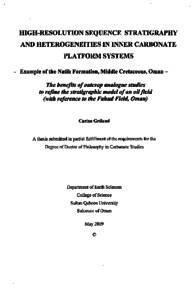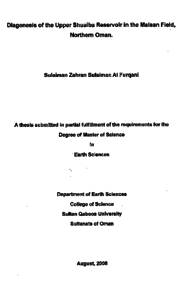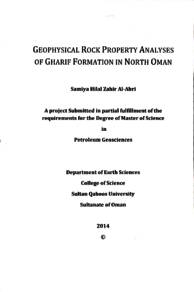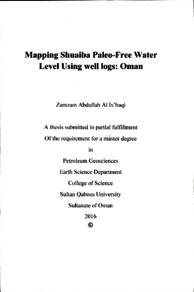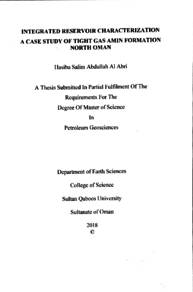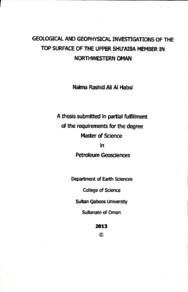Document
Stratigraphic frame work of the Mafraq Formation North Oman.
Publisher
Sultan Qaboos University
Gregorian
2007
Language
English
English abstract
The mixed clastic-carbonate Mafraq Formation (Late Triassic-Middle Jurassie) is the lowermost unit of the Sahtan Group and comprises a fluvial to shallow marine succession that onlaps the tilted Akhdar Group (Permo-Triassic) unconformity from the northwest to the southeast. To the northwest (basin wards) the Formation is 286m thick and divided into a Lower dominantly clastic Member and an Upper dominantly carbonate Member. Towards the basin margin it is thinner, approximately 30m in the Al Huwaisah area, where no lithostratigraphic subdivision is possible.
The sedimentological aspects of the study reveal a diachronous depositional system including offshore, shallow marine, coastal plain, fluvial and alluvial plain environments. This wide range of depositional environments occurs in transgresive-regressive cycles that reflect relative-sea level fluctuations on a local scale and can be used for regional correlation Seismic interpretation enabled the visualization of Mafraq termination reflectors (onlap, pinch-out and truncation) in the thicker sections and used to build up the stratigraphic framework. Mafraq channels were mapped and subdivided into two groups: high frequency and low frequency. This classification is probably related to Mafraq thickness and to some extent to the fill type.
Correlation incorporating well logs, biostratigraphy and core data shows sequences of transgresive-regressive cycles. The main events are: 1) Late Triassic regression resulting in the formation of Lower Mafraq fluvial sandstone reservoirs in the northwest, 2) Late Toarcian regression resulting in the formation of fluvial channels in the Yibal/Al Huwaisah area, 3) Early Aalenian flooding resulting in the deposition of shallow limestone reservoirs of the Upper Mafraq and 4) Mid and Late Bajocian flooding resulting in the deposition of Mafraq marine sandstone reservoirs in the Saih Rawl area.
The Mafraq Play has two principle trap types: 1) salt induced structural traps and fault bounded structural traps (Lekhwair, Fahud and Ghaba salt basins) and 2) stratigraphic traps with sandstone pinch-outs and onlaps. The play is largely dependent on reservoir and seal thicknesses, controlled by halokinesis and fault-related accommodation potential. The play remains poorly understood but encouraging producible gas (Lekhwair Dhulaima) and oil (Yibal/Al Huwaisah & Saih Rawl) fields have renewed interest in the play potential of this formation Mafraq hydrocarbon stratigraphic potential includes: the lower Mafraq onlap, pinch-out, Mafraq channels, rim synelines and truncated Akhdar carbonates. In order to further understand the Mafraq Formation it is recommended that: more cores are acquired, seismic properties are modelled and analyzed and Mafraq channels are targeted as a hydrocarbon play.
Member of
Resource URL
Same Subject
